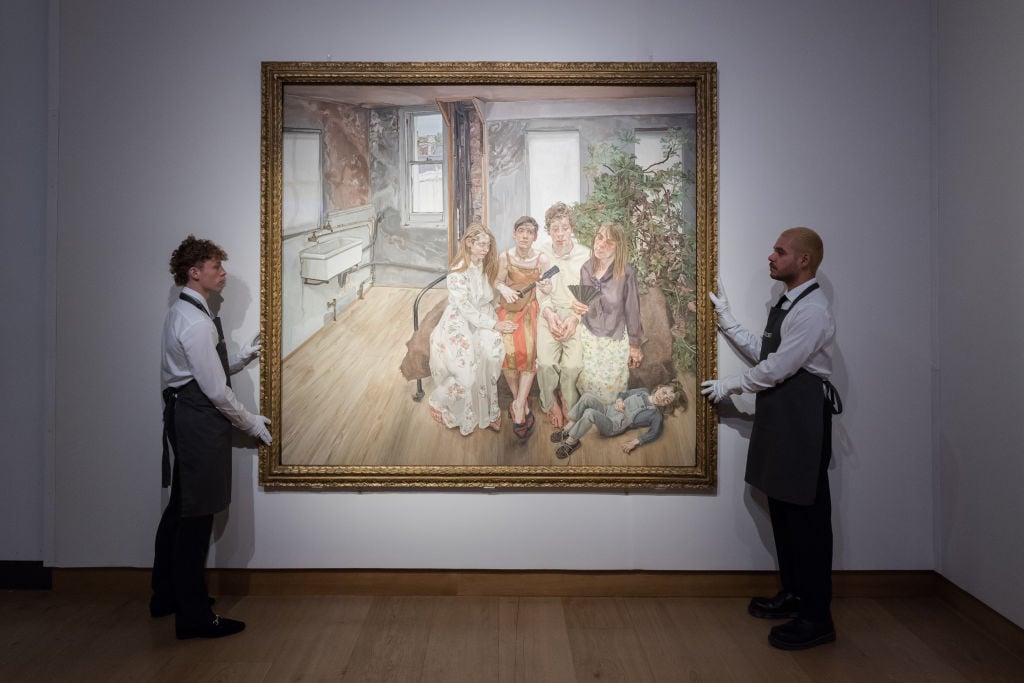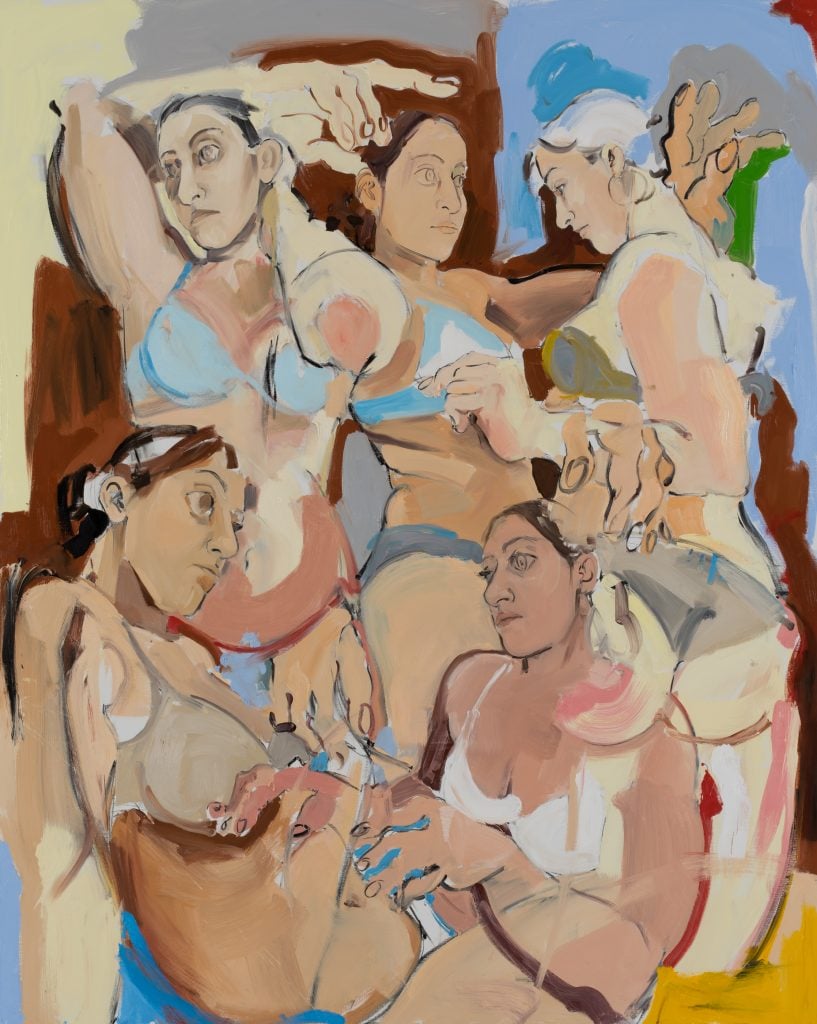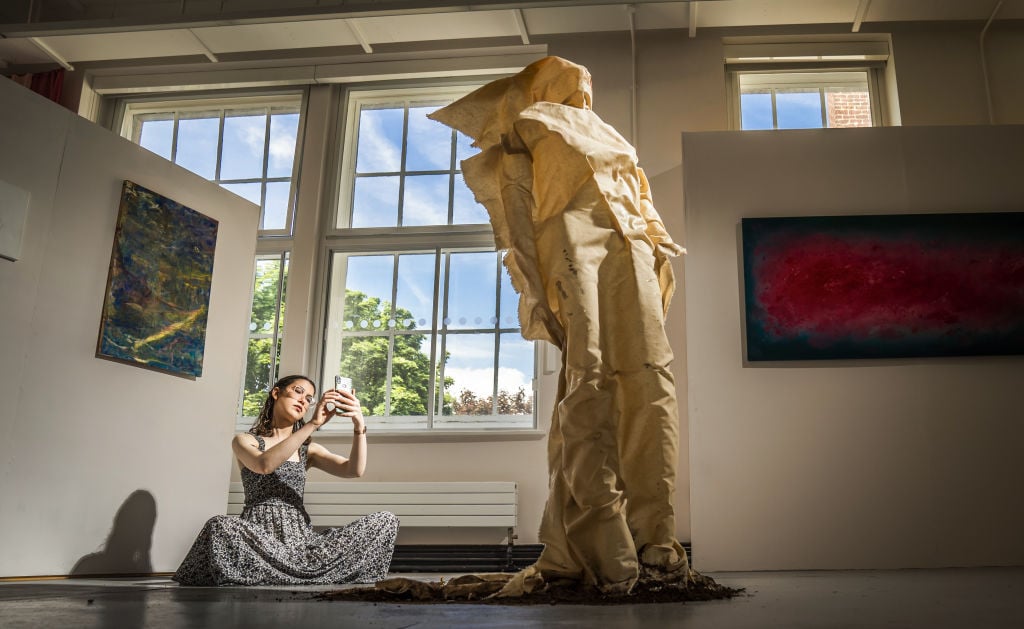What’s the smartest way to spend $20,000 on art? Is it a bad idea to help a big client avoid paying sales tax? How do I get an invite to a gallery dinner? Every month in Ask an Art Advisor, our go-to expert Wendy Goldsmith invites you to share your most pressing questions about navigating the art market—and she’ll draw from her decades of experience for the answer.
Do you have a query of your own? Email [email protected] and it may get answered in an upcoming article.
As the year draws to a close, I’m getting more worried about the economy. Which parts of the market will feel the recession first? Which artists or styles are most resistant to inflation?
Worldwide, everyone is worried about the economy from the increasing controls in China, wars on our doorstep, inflation and exchange rate issues globally; no one is exempt from this instability. So in times like this, as with other markets, the art world takes a flight to quality.
Picasso is still endlessly coveted, as is Miro and Monet, yet only the strongest examples will continue to make the serious money, as the cream always rises to the top. Nevertheless, this theory will be stress tested at auction in New York this month, starting with Paul Allen’s billion dollar extravaganza. There are going to have to be some very deep pockets to absorb all that the market has to offer. Is this the last hurrah? Are owners consigning now, thinking that this may be the last chance saloon?
It is said that the art market always has a six month lag from the financial markets. This was true in 2008 but I’m not so sure this will hold true in 2022. What I’ve noticed over the last few years, and haven’t seen before in my decades in the art world, is the depth of the market. Today I count clients from as far afield as Bulgaria and Vietnam, totally unheard of in the past. Plus, technology has not only ramped up the speed of the market exponentially, it also makes it possible to reach potential collectors in every corner of the globe. I’m not sure the youth of Asia for example, are going to want to give up betting on new young artists at auction anytime soon. Wealth is all relative, spending low to medium six figures on a basically unheard of artist without any institutional representation has become quite commonplace to them. Depending on their business obviously, I should think this will continue to be the norm. As for the primary galleries selling young artists, I see no slowdown in sight as there is an endless stream of collectors able to spend single and low figures. It’s become a bit of a blood sport, but also so much fun to many. It’s at the higher levels where the air becomes thinner.
So much wealth has been made since 2008, much of which was even made over lockdown. I feel quite bullish that the market will soldier on, at whatever level, in spite of any bumps along the way. Just do your homework to buy the best quality of whichever artist you desire, and all will be fine in the long term.

Large Interior, W11 (after Watteau) by Lucian Freud (estimate on request: in excess of $75,000,000) during a photo call to present the highlights from the estate of the philanthropist and co-founder of Microsoft, Paul G. Allen in London, United Kingdom on October 14, 2022. Photo by Wiktor Szymanowicz/Anadolu Agency via Getty Images.
Is it really wrong to buy directly from an artist? I saw a work at a graduation show last year that I have been thinking about (for nearly a year obviously). I communicated directly with the artist (who had no gallery representation back then) about it but did not proceed further. Now this artist is working with a gallery, on a different, new body of work. I’m still thinking about buying the old work though. What would be the best practice?
I would always suggest going through a gallery to acquire an artist, but this situation feels like a rare exception. If the piece really is a work that you saw at a graduation show, before any representation, and you have already been in discussion with the artist, I would think it fair to still contact the artist directly.
Nevertheless, once you do that, I would ask the artist what they feel comfortable with. Would they prefer to sell the work through the gallery? You don’t want to put the artist in an uncomfortable position should the gallery find out. It could be that the gallery is handling all their financial arrangements/invoicing now, or that they might not want to see any earlier works leaked out to the market career/quality wise? As long as there is plenty of communication all around, you’ve done the right thing.
I have just started working with a gallery and they want to take half of the sale price of my artwork but I don’t think that is very fair because I did all the work. My gallerist said this is normal, is it? In what circumstances would I be able to negotiate a differently weighted split?
You may indeed have done all the work, up to a point, but that’s when the gallery takes over and does the rest to catapult your career. There will be an army of staff in a gallery to deal with the marketing, art fairs, photography, cataloguing, invoicing, insurance, shipping, screening buyers who are not flippers, not to mention the gallery shows they put together, dinners, openings, security, flights, accommodation, designated web pages…I’m exhausted just writing this, the list is endless! As are the costs, especially in the current climate. These are the people who will create your future success and while it may look easy, it takes a vast amount of work, and investment, to get your paintings to fly out of the gallery on opening night, if not before. As an artist, do you really have that skill set as well?
On the whole, what I’ve just listed applies to the young and mid-career galleries, splitting the sale price at these levels I think is fair, but once you get to one of the four megas (Gagosian, Hauser, Pace and Zwirner), and you’ve become a Damien Hirst or George Condo, then I’m sure Larry would be happy to negotiate.

Cristina BanBan, Mujeres II (2022). ©Cristina BanBan. Courtesy of the artist and Skarstedt, New York.
What Wendy Wants
- The Tracy Anderson Method. Who knew exercise could be so addictive?
- I want every single one of Cristina Ban-Ban’s luscious new paintings in Skarstedt’s imminent show, “Mujeres,” her first exhibition with one of my favorite galleries.
- The Fife Arms Whisky, now available to buy online. Ah, to be back in Braemar. Their whisky is also the perfect warm up during the colder months to come.
Wendy Goldsmith is a former International Director at Christie’s in both New York and London, who now runs London’s Goldsmith Art Advisory. You can also find her on Instagram @wendy_goldsmith.








